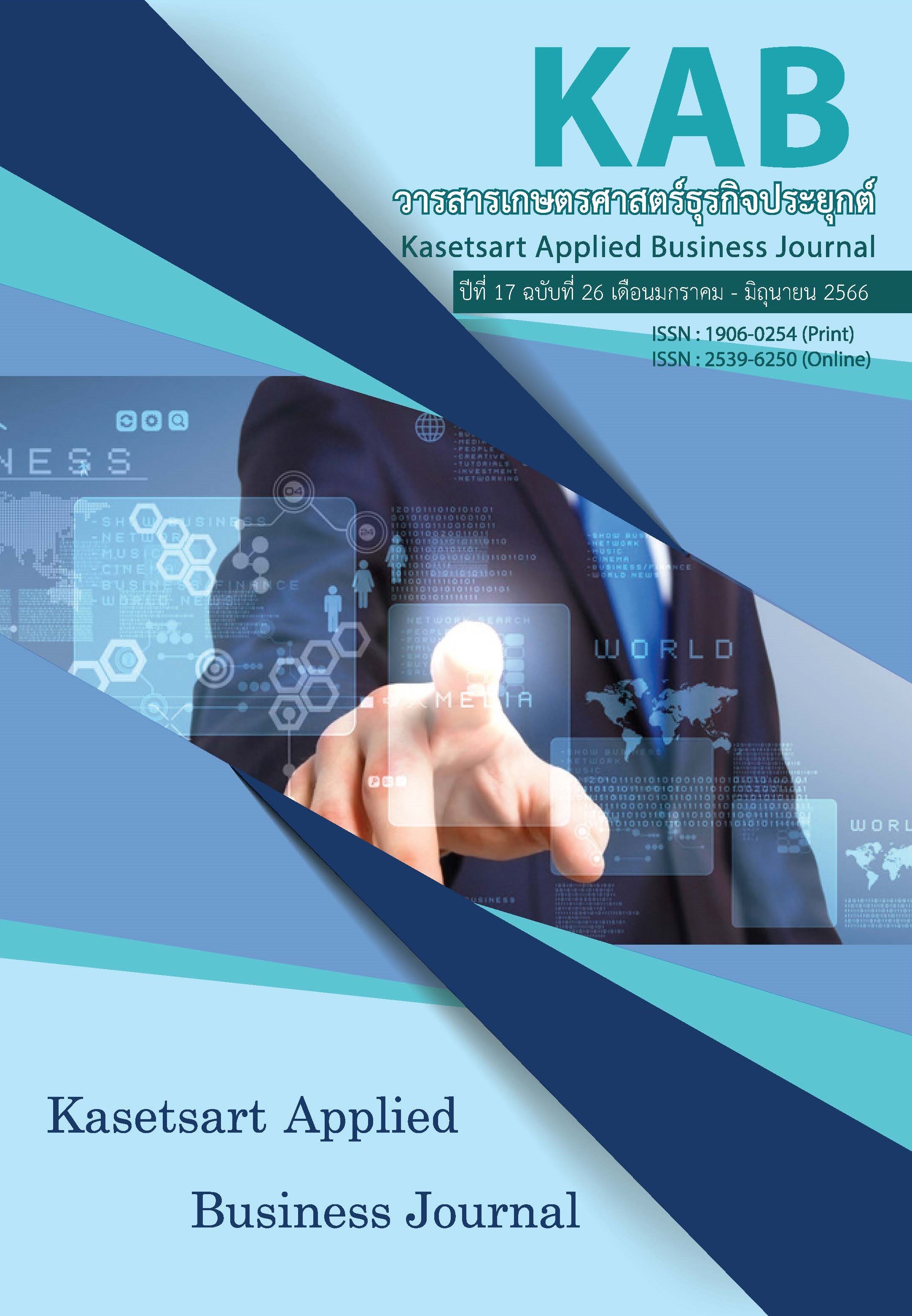การจัดสรรพอร์ตการลงทุนเชิงพลวัตโดยแบบจำลองการเปลี่ยนระบบแบบมาร์คอฟ : กรณีตลาดการเงินไทย
Main Article Content
บทคัดย่อ
การศึกษานี้นำเสนอการใช้แบบจำลองการเปลี่ยนระบบแบบมาร์คอฟ (Markov-switching) ประมาณค่าผลตอบแทนคาดหวัง ความแปรปรวน และความแปรปรวนร่วมระหว่างสินทรัพย์การลงทุนในพอร์ตการลงทุนประกอบด้วยหุ้นขนาดใหญ่ หุ้นขนาดเล็ก และตราสารหนี้รัฐบาล ซึ่งมีการเปลี่ยนแปลงเชิงพลวัตในภาวะตลาดต่าง ๆ จากนั้นจึงนำผลการประมาณค่าที่ได้ไปใช้ปรับน้ำหนักการลงทุนสำหรับการจัดสรรการลงทุนในสินทรัพย์เชิงพลวัต ผลการศึกษา พบว่าแบบจำลองการเปลี่ยนระบบมาร์คอฟ สามารถนำมากำหนดช่วงเวลาที่ตลาดอยู่ในภาวะกระทิงและหมี และพยากรณ์การปรับเปลี่ยนระบบในอนาคต โดยช่วงที่ตลาดอยู่ในภาวะตลาดกระทิง หุ้นขนาดใหญ่และหุ้นขนาดเล็กจะเป็นสินทรัพย์ที่มีผลตอบแทนและความเสี่ยงเหมาะสมในการจัดสรรน้ำหนักการลงทุน ในขณะที่ภาวะตลาดหมี การจัดสรรน้ำหนักการลงทุนเกือบทั้งหมดจะอยู่ที่ตราสารหนี้ซึ่งมีลักษณะเป็นสินทรัพย์ปลอดภัย เมื่อวิเคราะห์ผลการดำเนินการของพอร์ตการลงทุน พบว่า การปรับพอร์ตการลงทุนเชิงพลวัต ตามผลการประมาณค่าในแบบจำลองเปลี่ยนระบบแบบมาร์คอฟ สามารถให้ผลการดำเนินงานเมื่อพิจารณาจากอัตราผลตอบแทนสะสม ความแปรปวน และค่า Sharpe ratio ที่ดีกว่าพอร์ตการลงทุนทั้งในกรณีการจัดสรรน้ำหนักเท่าๆ กันในแต่ละสินทรัพย์ และการจัดพอร์ตามวิธีการ Mean-variance แบบปกติ ซึ่งผลการดำเนินงานที่ดีกว่าพบทั้งในกรณีการคำนวณค่าโดยใช้ข้อมูลในช่วงการประมาณค่า (in-sample) และข้อมูลนอกช่วงการประมาณค่า (out-of-sample)
Article Details

อนุญาตภายใต้เงื่อนไข Creative Commons Attribution-NonCommercial-NoDerivatives 4.0 International License.
Journal of TCI is licensed under a Creative Commons Attribution-NonCommercial-NoDerivatives 4.0 International (CC BY-NC-ND 4.0) licence, unless otherwise stated. Please read our Policies page for more information...
เอกสารอ้างอิง
Ang, A., & Bekaert, G. (2004). How regimes affect asset allocation. Financial Analysts Journal, 60(2), 86-99. https://doi.org/10.2469/faj.v60.n2.2612
Ang, A., & Chen, J. (2002). Asymmetric correlations of equity portfolios. Journal of Financial Economics, 63(3), 443-494. https://doi.org/10.1016/S0304-405X(02)00068-5
Bossaerts, P., & Hillion, P. (1999). Implementing statistical criteria to select return forecasting models: what do we learn?. The Review of Financial Studies, 12(2), 405-428. https://doi.org/10.1093/rfs/12.2.405
Bulla, J., Mergner, S., Bulla, I., Sesboüé, A., & Chesneau, C. (2011). Markov-switching asset allocation: Do profitable strategies exist?. Journal of Asset Management, 12(5), 310-321. https://doi.org/10.1057/jam.2010.27
Chusil, S. (2003). Investigation on regime switching in stock market: case studies of Thailand and US [Doctoral dissertation]. Thammasat University Library.
De la Torre-Torres, O. V., Galeana-Figueroa, E., & Álvarez-García, J. (2021). A Markov-switching VSTOXX trading algorithm for enhancing EUR stock portfolio performance. Mathematics, 9(9), 1030. https://doi.org/10.3390/math9091030
Fama, E. F., & French, K. R. (1992). The Cross-Section of Expected Stock Returns. Journal of Finance, 47(2), 427-465. https://doi.org/10.1111/j.1540-6261.1992.tb04398.x
Franses, P. H., & Van Dijk, D. (2000). Non-linear time series models in empirical finance. Cambridge university press.
Guidolin, M., & Timmermann, A. (2006). An econometric model of nonlinear dynamics in the joint distribution of stock and bond returns. Journal of Applied Econometrics, 21(1), 1-22. https://doi.org/10.1002/jae.824
Guidolin, M., & Timmermann, A. (2007). Asset allocation under multivariate regime switching. Journal of Economic Dynamics and Control, 31(11), 3503-3544. https://doi.org/10.1016/j.jedc.2006.12.004
Khanthavit, A. (2001). A Markov-Switching model for mutual fund performance evaluation [Unpublished manuscript]. Thammasat University and Stock Exchange of Thailand.
Liow, K. H., & Zhu, H. (2007). Regime switching and asset allocation: Evidence from international real estate security markets. Journal of Property Investment & Finance. https://doi.org/10.1108/14635780710746920
Nuanboon, L. (2009). Predicting Bear Stock Market in Thailand with Macroeconomic Variables Via Markov Switching Model [Master’ s thesis]. Thammasat University Library.
Opdyke, J. D. J. (2007). Comparing Sharpe ratios: so where are the p-values?. Journal of Asset Management, 8(5), 308-336. https://doi.org/10.1057/palgrave.jam.2250084
Shibata, M. (2012). Identifying bull and bear markets in Japan. Asia-Pacific Financial Markets, 19(2), 99-117. https://doi.org/10.1007/s10690-011-91


